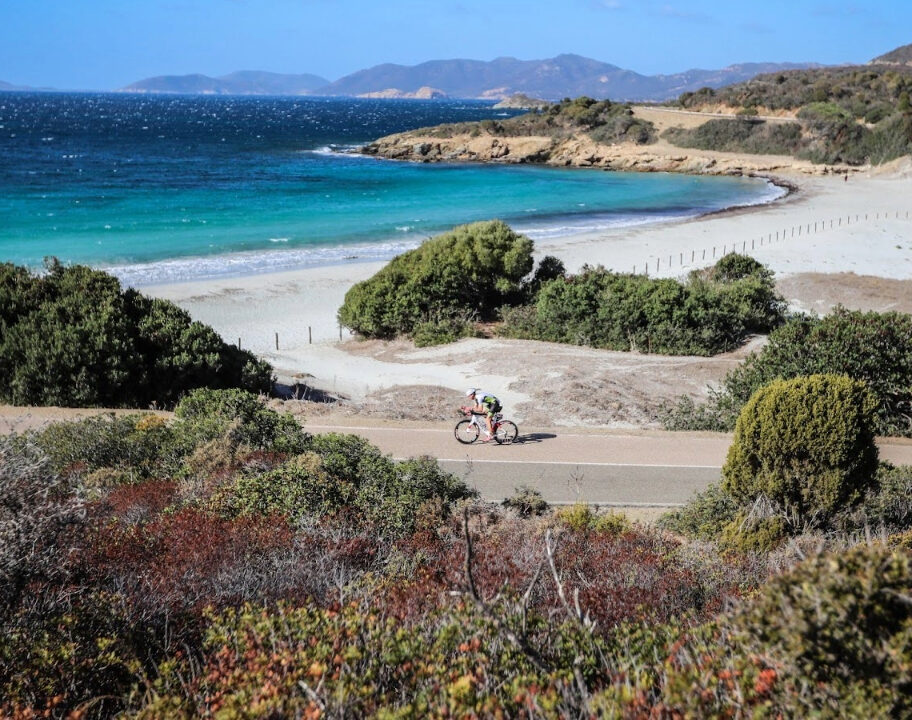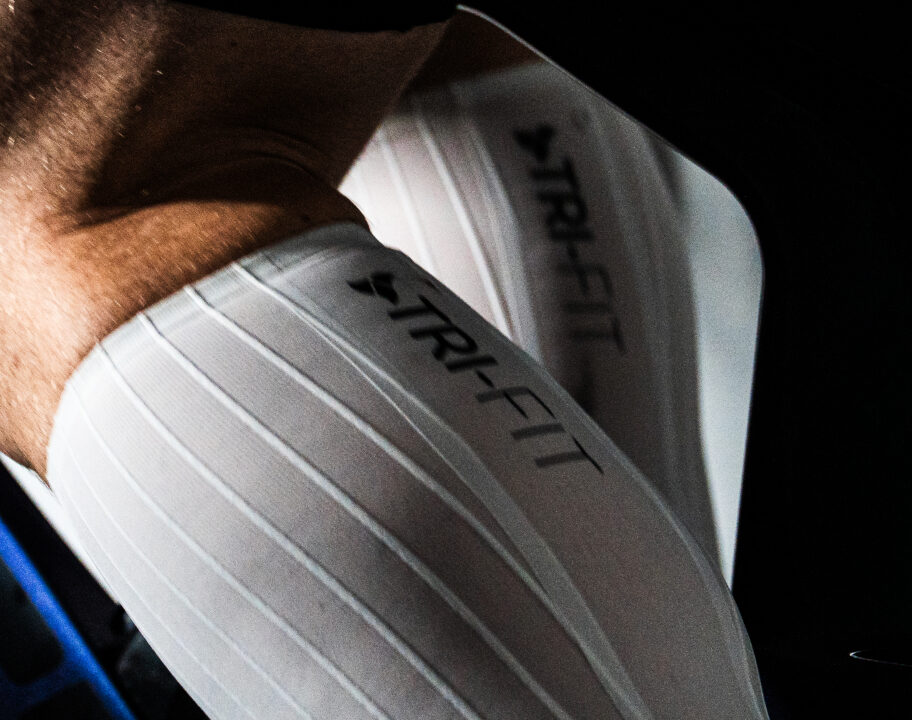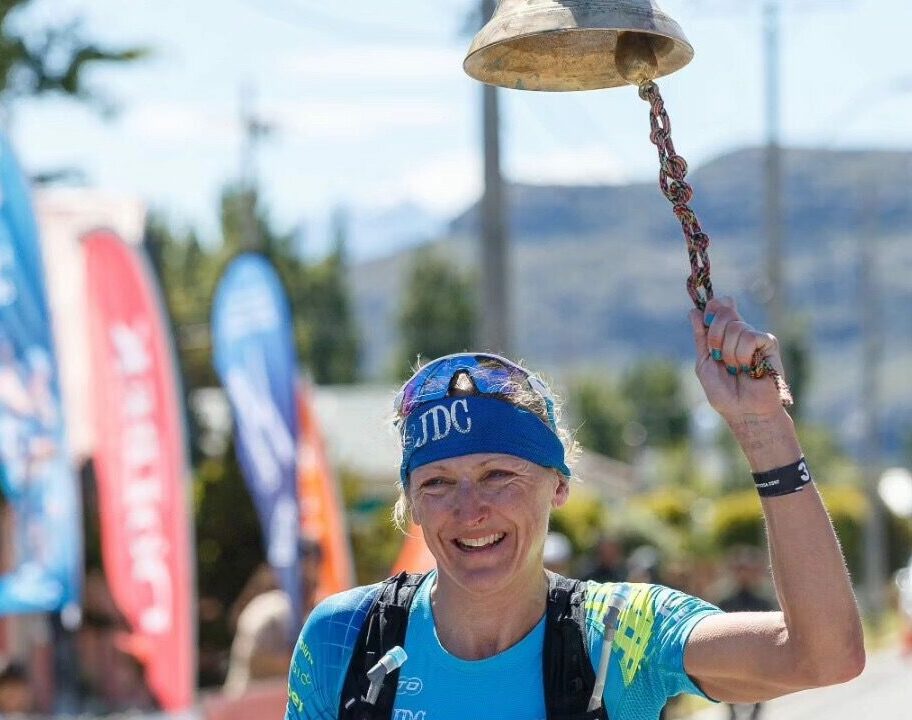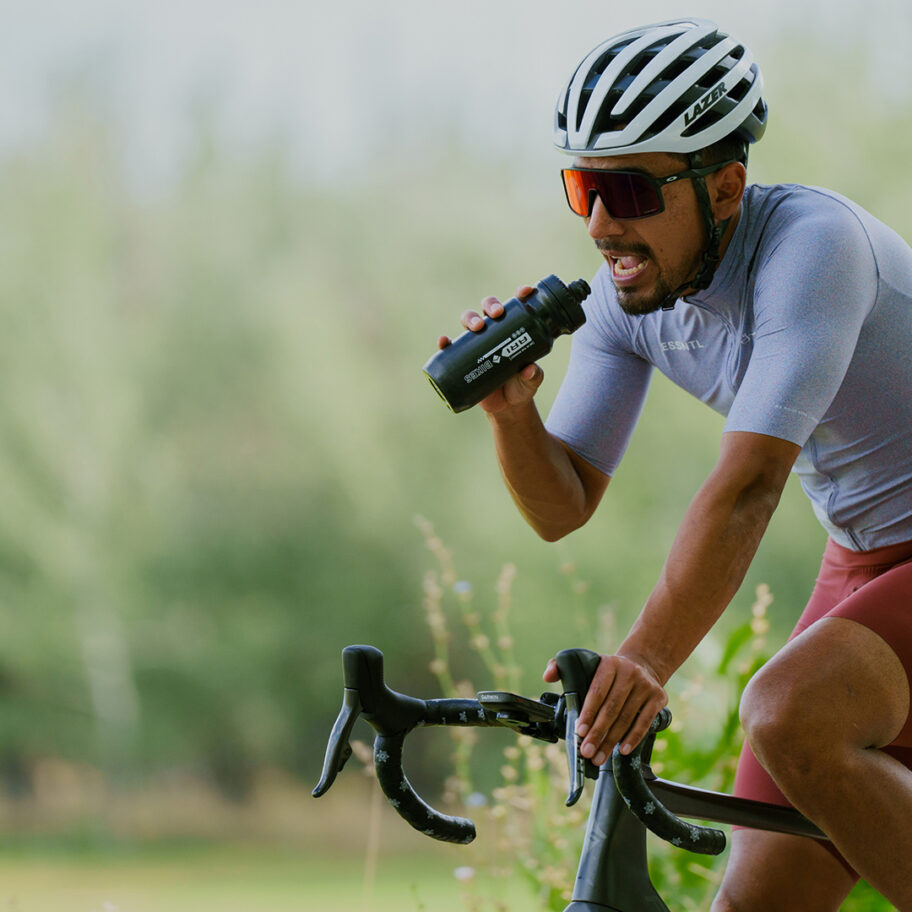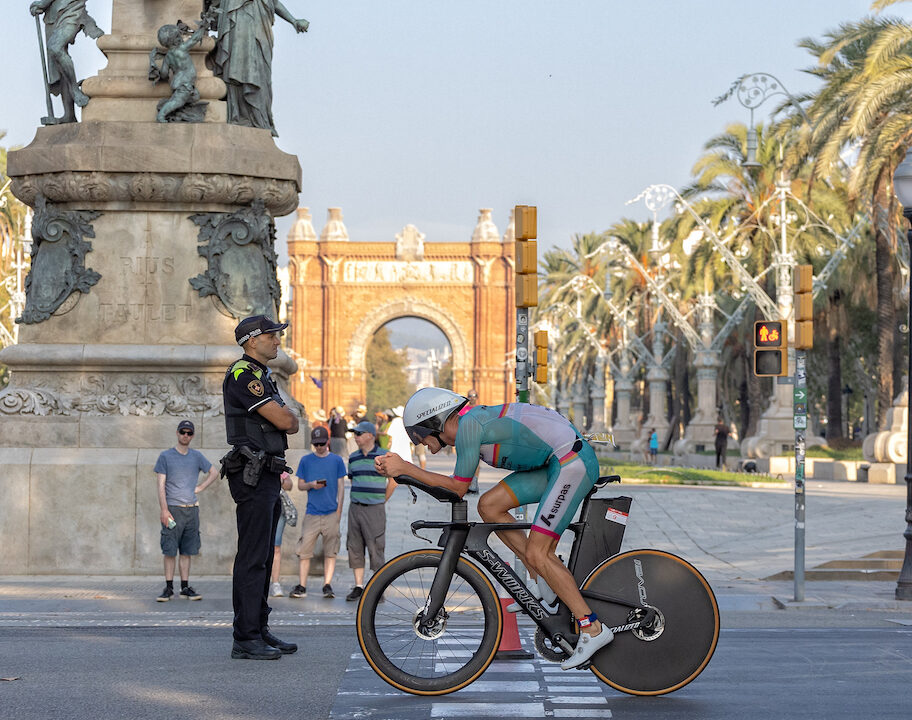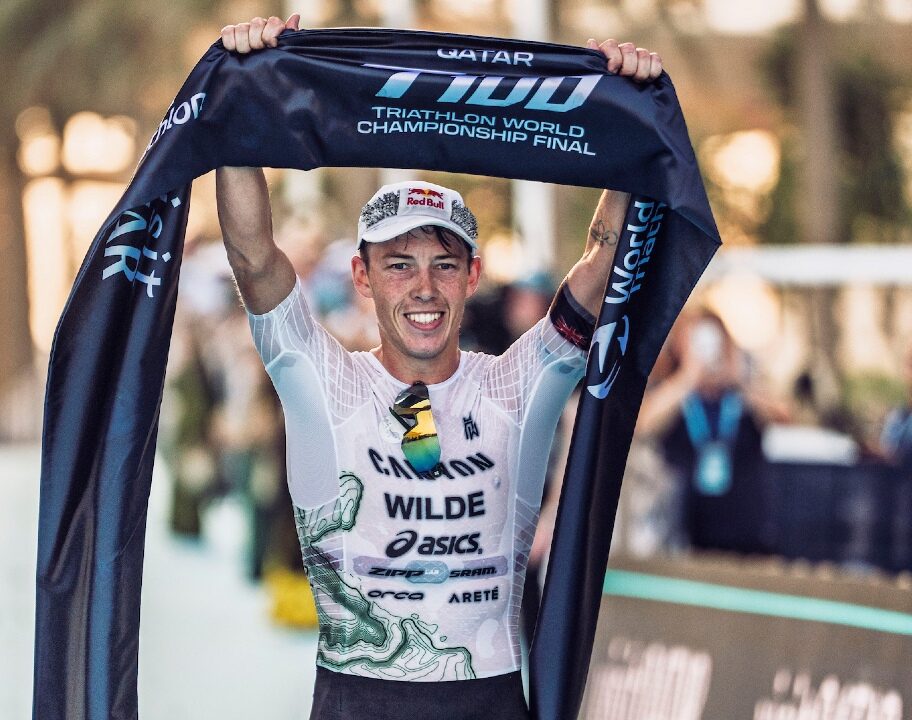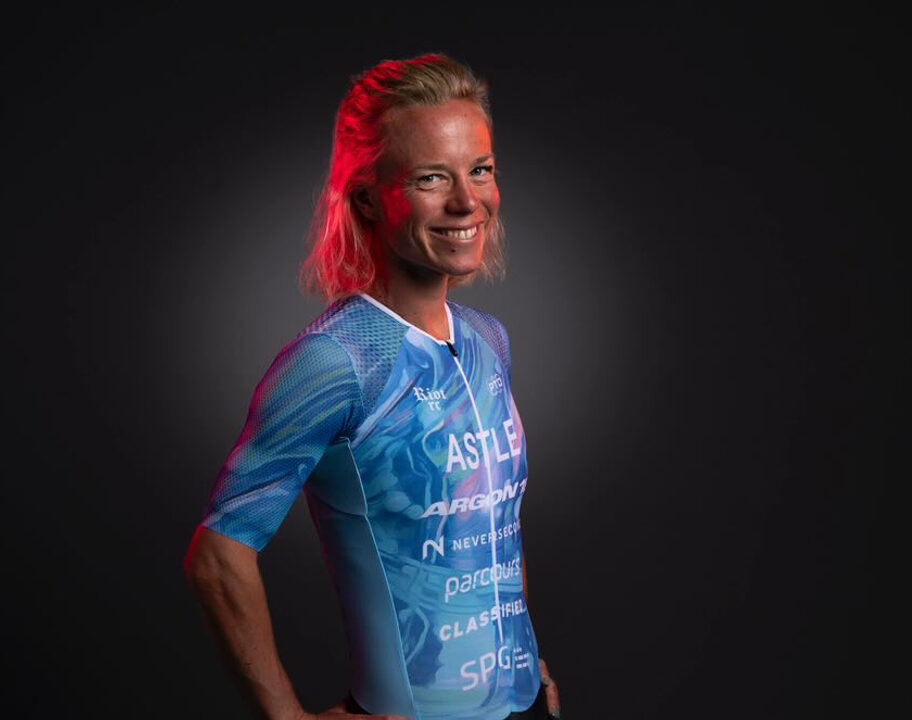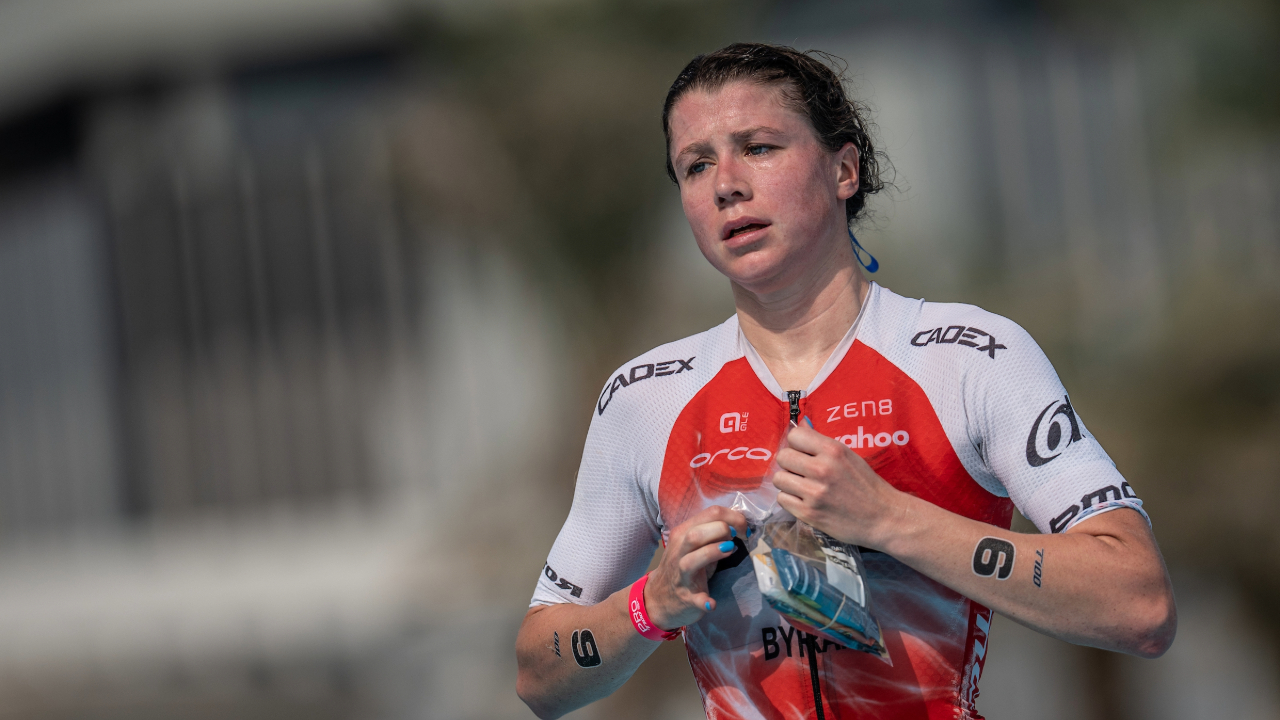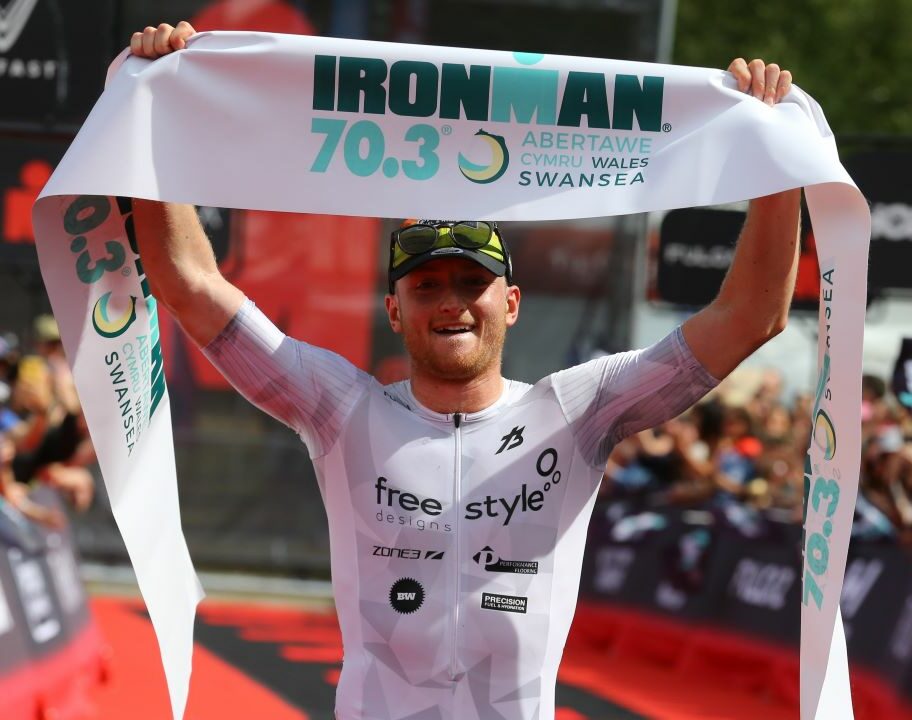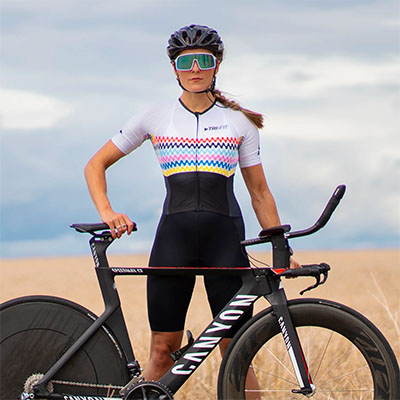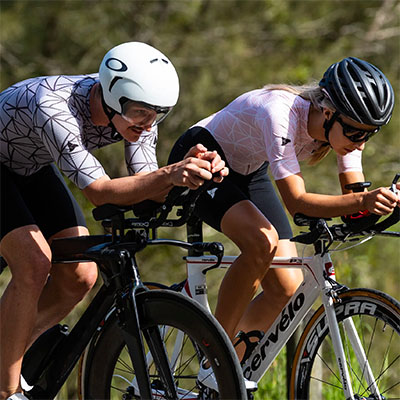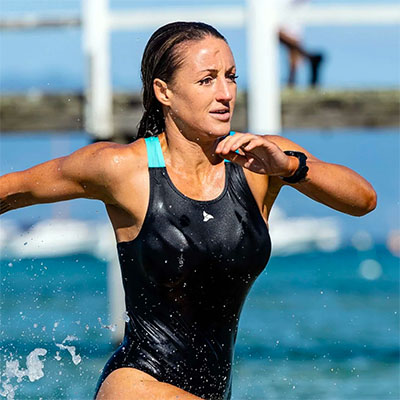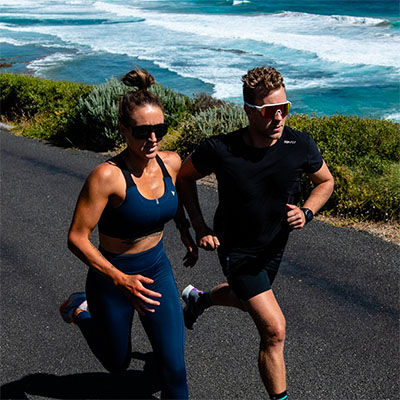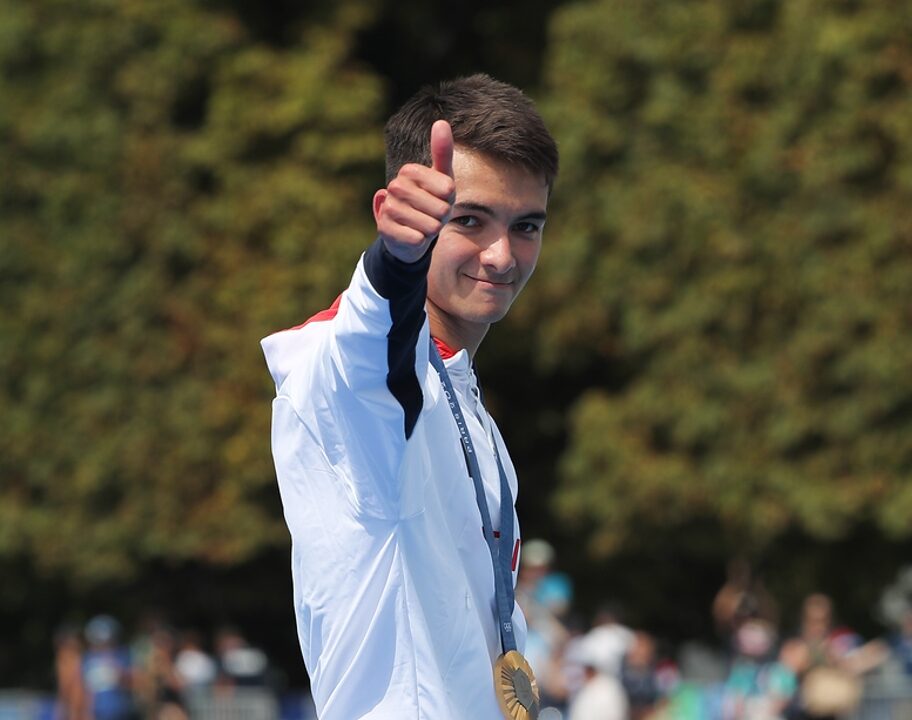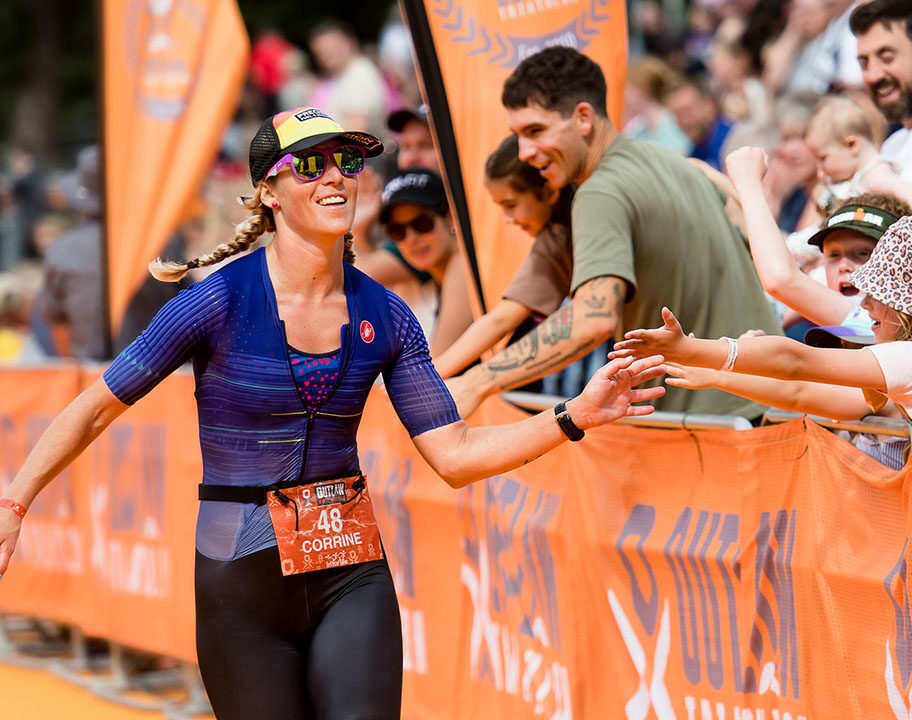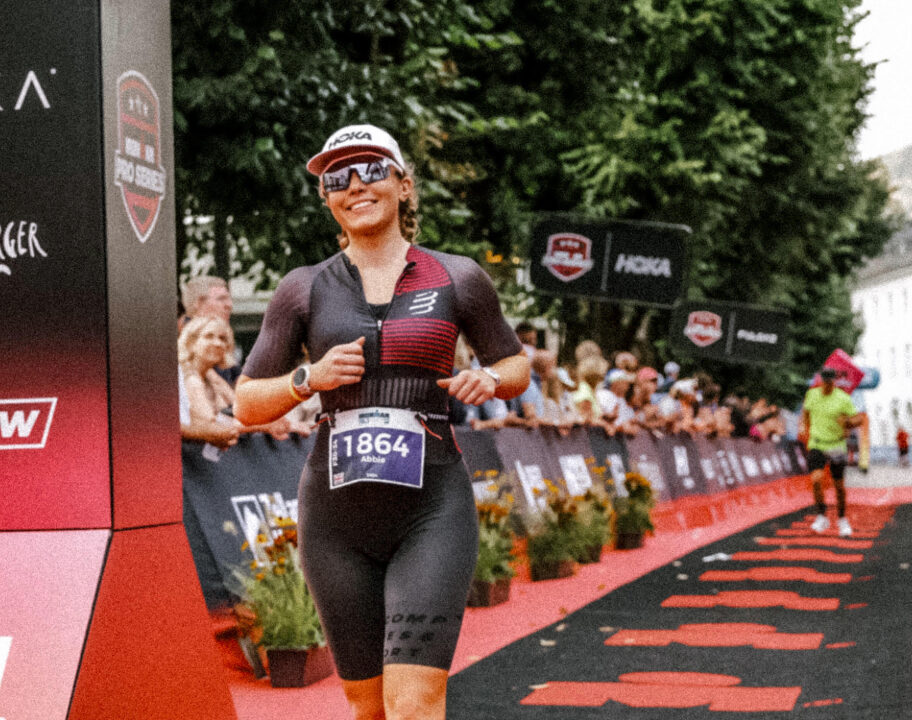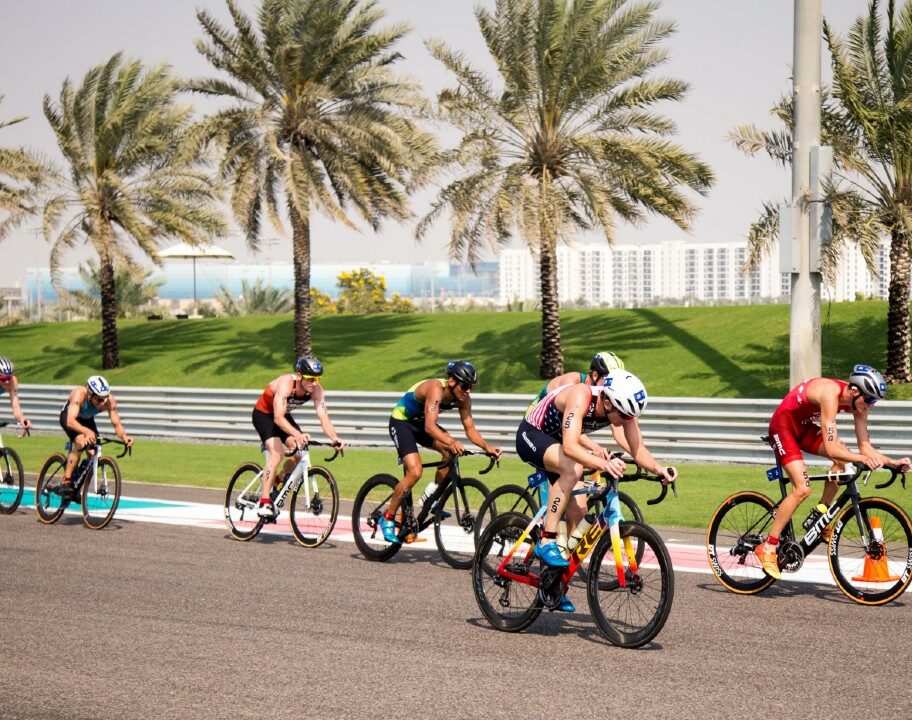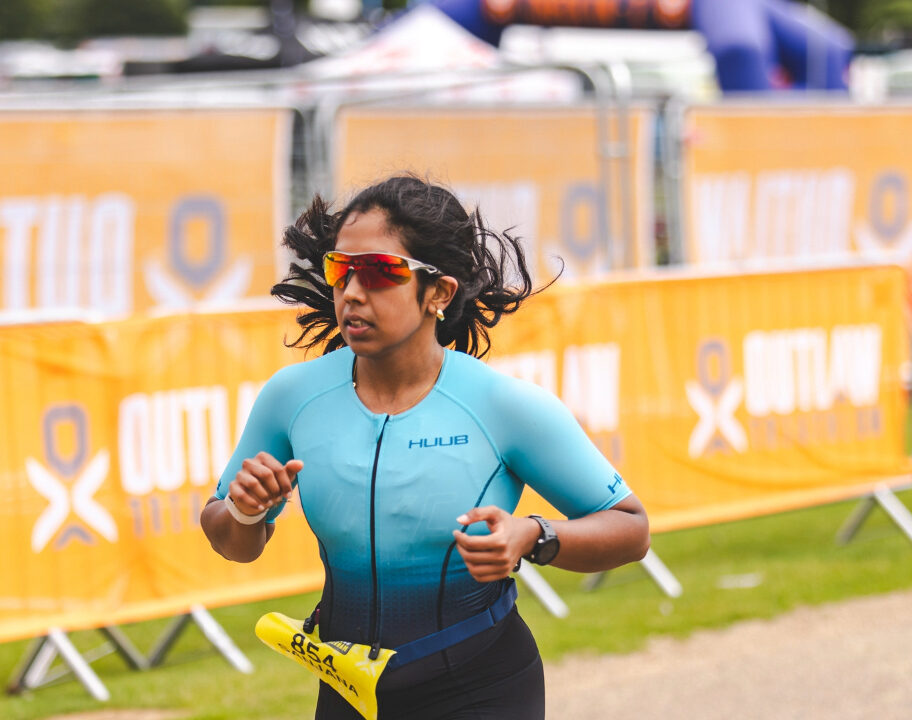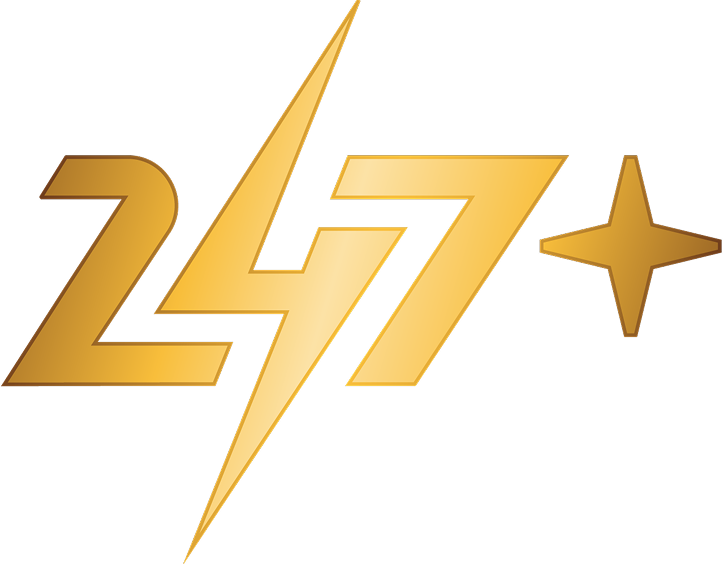Breaking Nine – NUTRITION
In a series of articles under the heading ‘Breaking Nine’, TRI247 will be reporting on the training, advice and equipment being undertaken, received and used by Ross Macdonald in his efforts to break the nine-hour IRONMAN barrier in 2019. Whilst Ross is an experienced long-distance triathlete, the advice he receives will be beneficial to all, no matter what your goals are.
In this article Ross is provided with detailed feedback on his nutrition by Joel Enoch, who is Nutritional Ambassador for CLIF Bar.
Ross, trying to fit his training in around a full-time job in London, was keen to hear Joel’s thoughts on his current diet and to receive any suggestions for helping him improve with performance and recovery in mind.
CLICK HERE to download the detailed spreadsheet of Ross’ typical weekday, weekend and race day nutrition, training, hydration and supplement usage which provided the basis for Joel’s review below.
(The ideas and suggestions written below are the opinions of Joel Enoch, an award-winning triathlon coach for the Hartree JETS, 9-time GB Age-group triathlete and CLIF Bar’s paid nutritional ambassador in the UK.
This article is provided for general educational purposes only and should not be construed as medical advice or care. The contents of this article are not intended to make health or nutrition claims about Clif Bar & Company products. Always seek the advice of a physician or other qualified health provider before beginning any physical fitness or health and nutrition related activity.
@ClifBar | #feedyouradventure | @joel_enoch (Twitter) @tricoachjoel (Instagram) / @HartreeJetsTri / www.facebook.com/hartreejetstri)
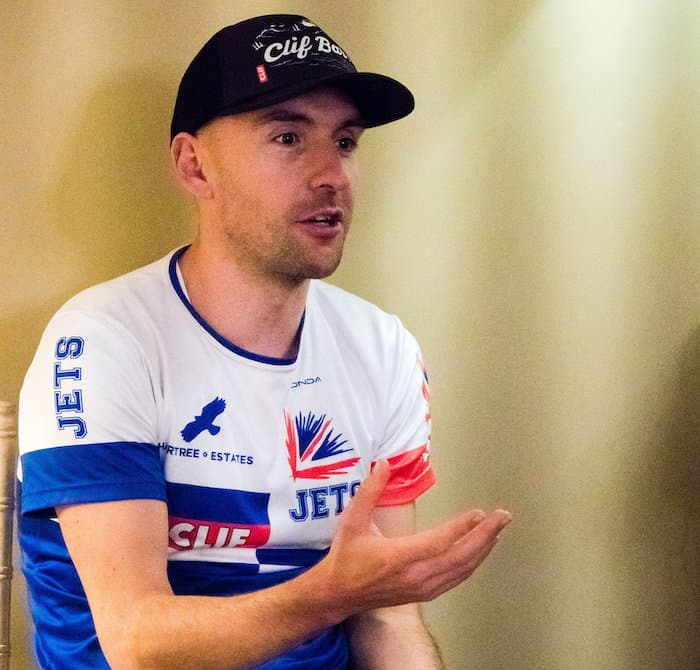
Joel Enoch reviews Ross’ nutrition… what were his thoughts?
For a triathlete, the only thing bigger than the nutritional demands of completing an Iron-distance race are the nutritional demands of training for one! This demand is heightened given that amateur athletes also need to earn a living as well as maintain their physical health, mental and emotional wellbeing. The task is significant, and a review of Ross’ nutrition carries some important lessons for anyone looking to take on a long-course, multisport challenge. Using Ross’ diet as an example (see link above to his current approach), below you will find the main areas to consider when it comes to nutrition and some take-home points for you to apply to your own diet.
WHAT – Quality:
Think of your food as a financial investment. You want to get as much back from each unit of food you eat. The demand sportspeople place on their body means that if they want their body to grow, change, adapt and develop they need to choose foods that support this process. Ross’ diet is pretty good. He has clearly thought about getting the three major nutrients of carbs, protein and fats/lipids and planned these into his daily routine. However, it lacks an abundance of the colourful vegetables and fruits that contain the plant nutrients that a) drive and support energy production from carbohydrates, b) partner protein’s role in recovery from a session and c) help load stored fats from the food you eat with vitamins A, D, K and E that will keep the body healthy and stave off injury, illness and fatigue.
For athletes of all levels, I would start planning each meal around fruits and vegetables and then think about adding carbohydrates, protein and fats to it. A good breakfast example would be to start with a selection of fruits, then add a wholegrain cereal and milk/milk alternative. For lunch, Ross gave me a jacket potato with tuna as an example, but he might be better served with a colourful salad (for micronutrients), couscous or rice (for carbohydrates and minerals) and mackerel (for oils and protein) as tuna has its natural healthy oils removed. For dinner, start with a bed of mixed salad or vegetables, before adding grains, beans, oils.
Like for all athletes, carbohydrates (which come from foods that grow) are important for Ross and he does pretty well here. We all want to be getting whole grain sources of carbohydrates, which basically means that there is at least a 5:1 ratio of carbs/sugar to fibre. With carbs coming from the oats in his porridge or from wholegrain toast for his breakfast, this is a great start. By making sure that his rice is wholegrain or basmati and possibly swapping his rice cakes for oatcakes (which are higher in fibre and more nutrient dense), he will improve his intake of fibre without limiting carb intake. This aim is a good one for all of us – active or not.
When it comes to protein, Ross eats a diet that includes fish – which is the core of his protein intake along with dairy – and eats no other meats. The debate about protein for athletes is huge, but boils down to research that clearly shows that athletes who eat no animal food at all CAN get enough protein from plant foods. Given this, while dairy and eggs do provide good quality protein, are they necessary, as they also cause inflammation in the body? Given that the bodies of endurance athletes like Ross are dealing with a large level of inflammation from training already, there is a question about whether we should be adding to this through our diet. Some inflammation is good, too much is bad. Where the scale tips for each individual we cannot know (yet), however, much of this probably comes down to the bacteria we have in our gut.
You can do a test yourself for this. Remove all animal foods from your diet and see if your gut function changes for the better. If you find reduced bloating, less soreness, less cramping, fewer ‘runner’s trots’ and a more regular toiletry pattern, it’s likely that your body might not handle animal food well. Look to reduce these to only 1-2 days a week. I would suggest that Ross keeps a small amount of smaller, oily fish in his diet, but I can’t see the need for eggs or dairy and would swap these for plant-based alternatives.
Lastly, while saturated fat may not directly affect athletic performance, it holds no benefits and negatively affects health in a number of ways. The coconut oil in Ross’ Thai curry, an example he gave me as an evening meal, is very high in saturated fat and, while there is much written about the benefits of coconut oils, there is ample research to suggest that their action is no better than butter when it comes to cardiovascular health. All athletes should look to reduce saturated fat in their diet.
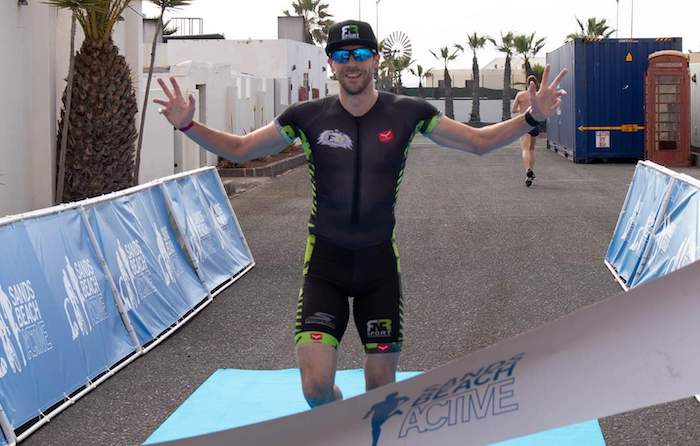
WHEN – Timing:
This issue is a large factor for athletes that is of less of a concern for people who don’t follow a strict eating pattern. The classic wisdom suggests that you need to leave a minimum of 2 hours between eating and training to let your body digest the food, without it needing to shunt blood away from the digestive system to the working muscles. Everyone is different, and many might struggle to eat the breakfast that Ross does immediately before a commute involving an 8-mile run with some threshold efforts. If this works for him though, then fine. However, fuelling recovery is really important and an area I think Ross can improve on. His session has essentially been fuelled by his meal from the night before and if he is in any doubt of this, he can fuel it with a small snack and easily digestible carbohydrates during the run. I would prefer to see him take his breakfast in storage containers and eat it at work when we gets there.
Ross’s schedule means it will be difficult for him not to eat late as he clearly likes an evening workout, sometimes still being active at 10pm, and perhaps cannot bring this forward due to work commitments. For him I’m not sure there is a way round this. However, for everyone, eating late can affect sleep quality and so we should look to eat earlier and at least two hours before bed. If this is unavoidable, then one way around this is to really fuel the session well, then have a smaller recovery snack immediately afterwards. Alternatively, rather than following social norms and having the largest meal in the evening, add these extra calories to breakfast, snacks and lunch and then eat a light evening meal such as soup, Moroccan mixed veg with couscous or rice salad.
QUANTITY – How Much:
Just to stay alive, you need about 1300-1600 cals each day. Moving then takes up about another 600-800 cals and then athletes have to factor in training as well. Ross’ energy burn from training will vary through the season, but in the training he describes, he is probably burning another 1200-1500 cals a day (sometimes a lot more). He states that he aims to get about 3000 cals a day, which would normally not be enough. This is a key point for endurance athletes. If you train most days, quite hard – and if you eat a largely wholefood, plant-based diet, it is nearly impossible to over eat. Even if you do carry 5-7% more weight during the Winter than you would do during the season, this will only help immunity and consistent training, and training heavier and racing lighter can have some performance benefits if kept controlled. This is something that is often missed; the leanest athletes often eat the most calories from a wholefood diet as the quantity and quality of their intake drives metabolism (and therefore fat burning at rest) as well as recovery and adaptation from hard sessions. I’ve seen athletes actually start to eat more but lose body fat and train better. This is a winning combination for Ross’s challenge of sub-nine. It might be wise to try to over fuel and as long as the intake doesn’t inhibit training and sleep, or lead to unhealthy weight gain, then it’s ok to eat as much as he likes.
When adding more calories, athletes need to focus on carbohydrate foods that also have some protein and fats. Ross’ choice of Greek yoghurt and nuts and seeds are well intentioned, but I would add raisins to the nuts, or choose things like roasted chickpeas, other fruits, oatcakes, CLIF Bars/Nut butter filled Bars or homemade energy balls at around 11am as this would support his adaptation to training and give him energy reserves for afternoon sessions.
If you eat very well and train regularly, you can (and probably should) eat lots!
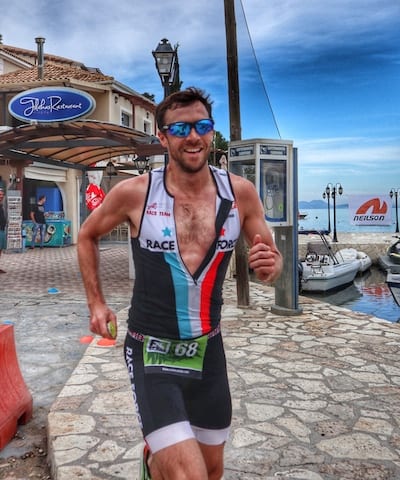
RACE DAY:
It is important to find a race routIne that follows nutritional guidelines packed up in a practical pattern that works for you. 2-3hrs before a 70.3 or Iron-distance race, athletes should aim to get 2g of carbs per kg of their body weight and Ross does this through oats, toast and banana. Some athletes might find that they need to eat simpler carbohydrates like corn flakes or rice pudding. While these aren’t as healthy, on race day you just need the energy!
The timing of fluid before an event is interesting. Just because it’s in you, it doesn’t mean it’s hydrating you. Drinking fluid and electrolytes the day before the event is a good way to make sure race day is about topping up and as fluid needs a while to be absorbed, most drinking should be finished by two hours before the event. After this maybe sip 200-300mls, not too much more. This has an impact on Ross’s caffeine intake which is largely in liquid form. He currently takes caffeine 30 mins before the event start in liquid form, but I would suggest when this close to the start he use bespoke caffeine products, so the fluid, caffeine and carbs can be taken at the best time for each.
Ross’ race nutrition and hydration is pretty bang on, with an intake of about 60g of carb per hour separated out as much as possible. Ross says he sweats a lot, but that doesn’t mean he loses a lot of sodium. All long course athletes need to work out their approximate sweat loss, but also where they sit on the scale of sodium loss, which can vary eight-fold between different athletes. All 70.3 and IM athletes should make sure that they are getting at least 200 mg of sodium / 500mls of fluid from the products they use, but this can go up to 800mg / 500mls for those who find they have the saltiest sweat residues. Ross might need to up his sodium intake – do you?
Meine German ist nicht gut. Only wanted a burger. #ironmanrecovery #feedme with @stevedrewery1 @RaceForceLtd pic.twitter.com/jrYjV5SxWH
— Ross Macdonald (@sportyross) July 18, 2016
Post-race, the best advice is to have the very best version of whatever food you want. However, one often over-looked point are the following days. Research shows damage to the body extending for up to 19 days after an IM race and so calorie consumption shouldn’t be limited in this period. An athlete’s body is going to need a constant supply of carbs, good fat and protein, but also vitamins, minerals and other nutrients to heal. This is why it’s not just about quantity, but also quality. Chose the BEST, of whatever you want. Ross does well but needs to make sure he is looking after his nutrition on the day’s following a big race – this goes for big training sessions too!
BONUS FEATURE – SUPPLEMENTS:
Finally, supplements. We can get most of what we need through our diet. However, living in the UK, vitamin D is a must from October-April (and maybe all year), and for those on a plant-based diet, B12 is also important as the body doesn’t produce it. Some research suggests that male athletes should take Zinc and many male and female endurance athletes also need to take Iron – but ONLY following a diagnosis of low levels from a blood test. There is research to suggest that multivitamins containing synthesised vit A, C and E can inhibit the adaptation to training so these should be limited. With a good diet there is little need for much else, however, increasingly, we are seeing that gut health is king and that this is supported by the consumption of probiotics. For Ross, his ‘catch-all’ supplement covers the bases, but probably contains too many unnecessary nutrients. He could swap it for Vit D, Zinc and a probiotic and probably save a lot of money!
SUMMARY
The take home here is to think about what you eat, when you eat it and how much you take in. Start with plant-based ingredients and foods and cook in bulk so that you can transport foods with you to support training and recovery with the best nutrition you can. It does require some thought, but not a huge amount of effort.
Ross is doing well and with some small changes will have optimised his diet for the challenge of a sub-nine hour Ironman!
Follow Ross and his progress via @breakingnine and @sportyross
https://www.instagram.com/p/Bs08o3-nAtf/

